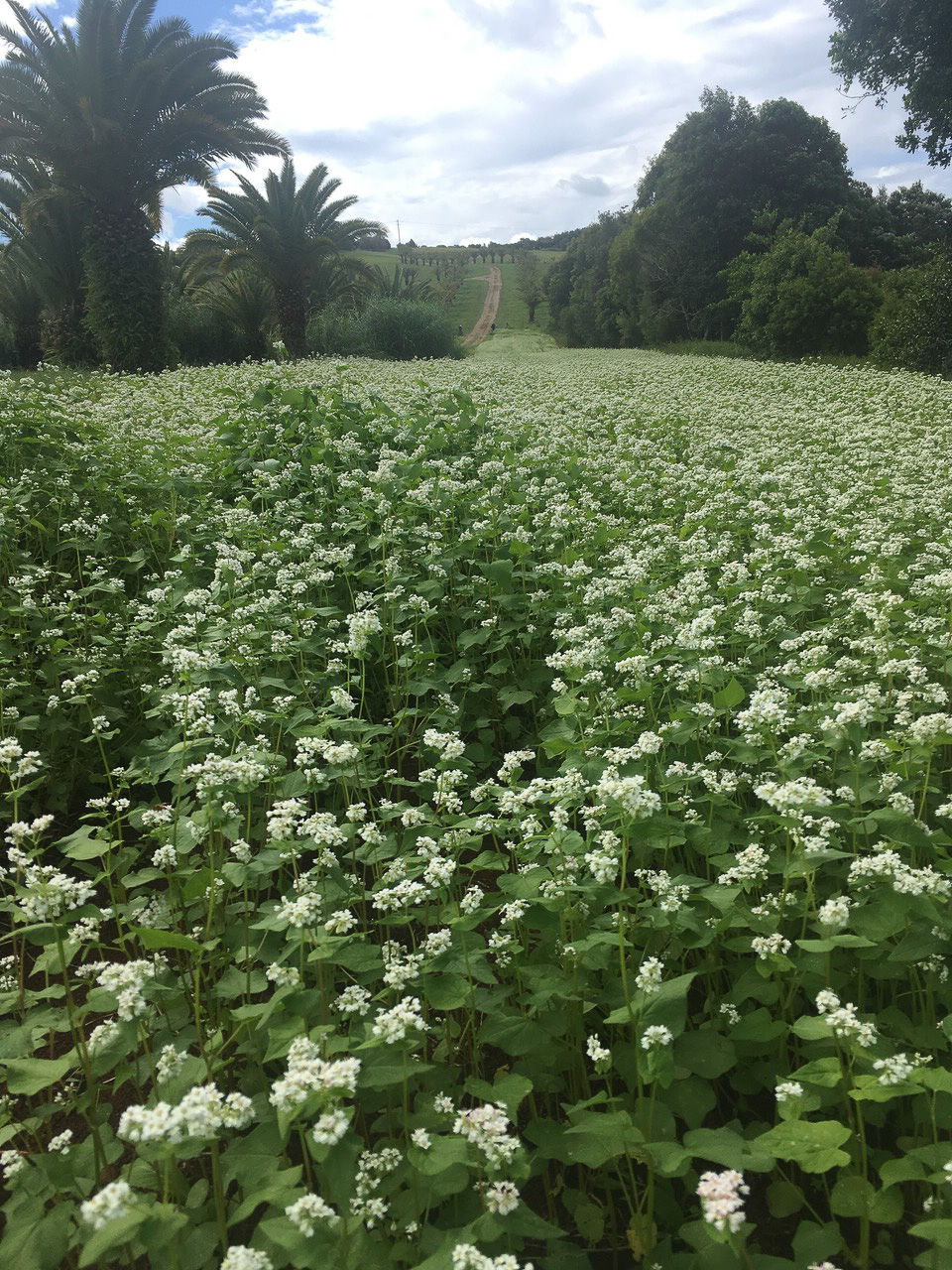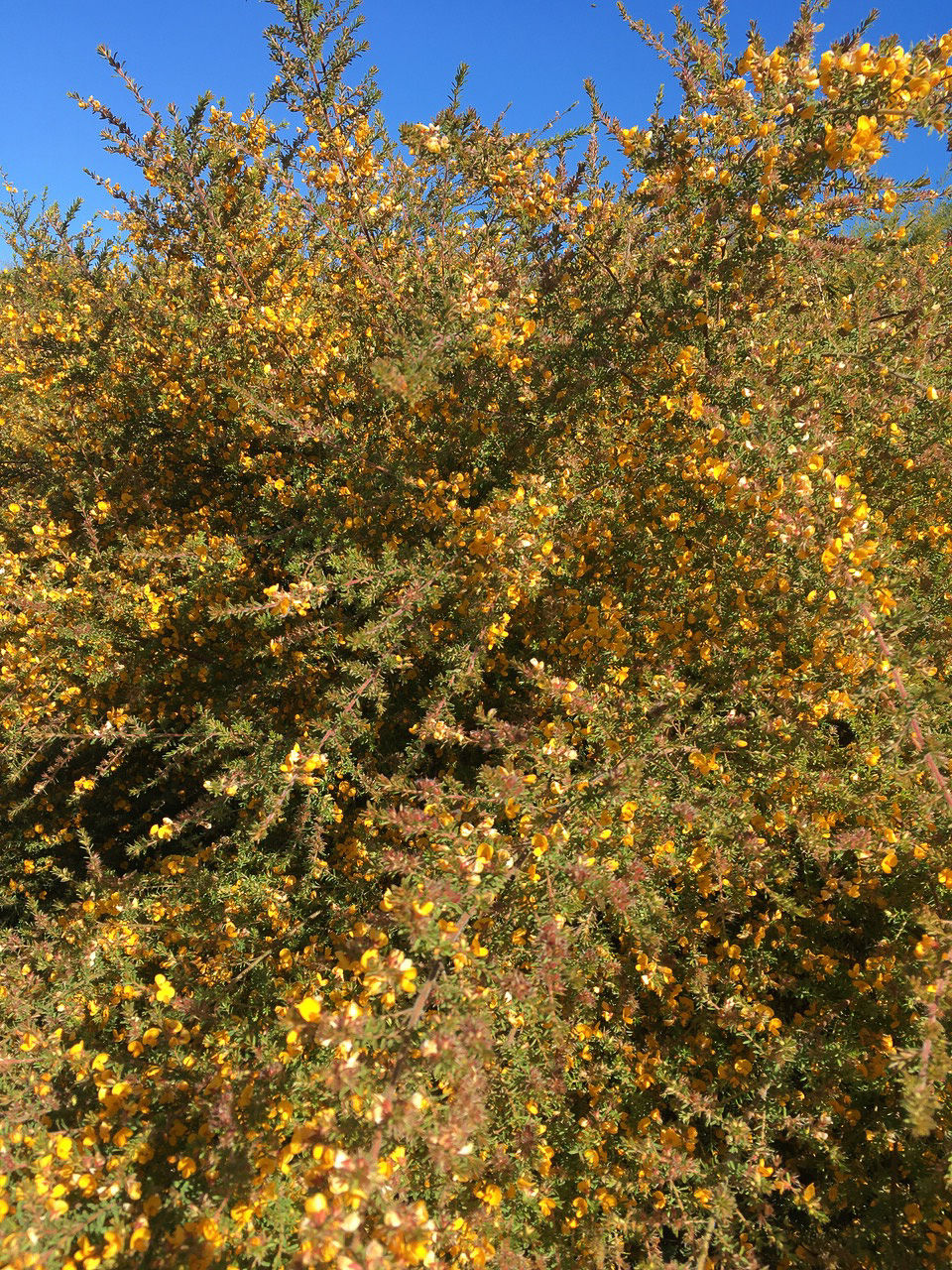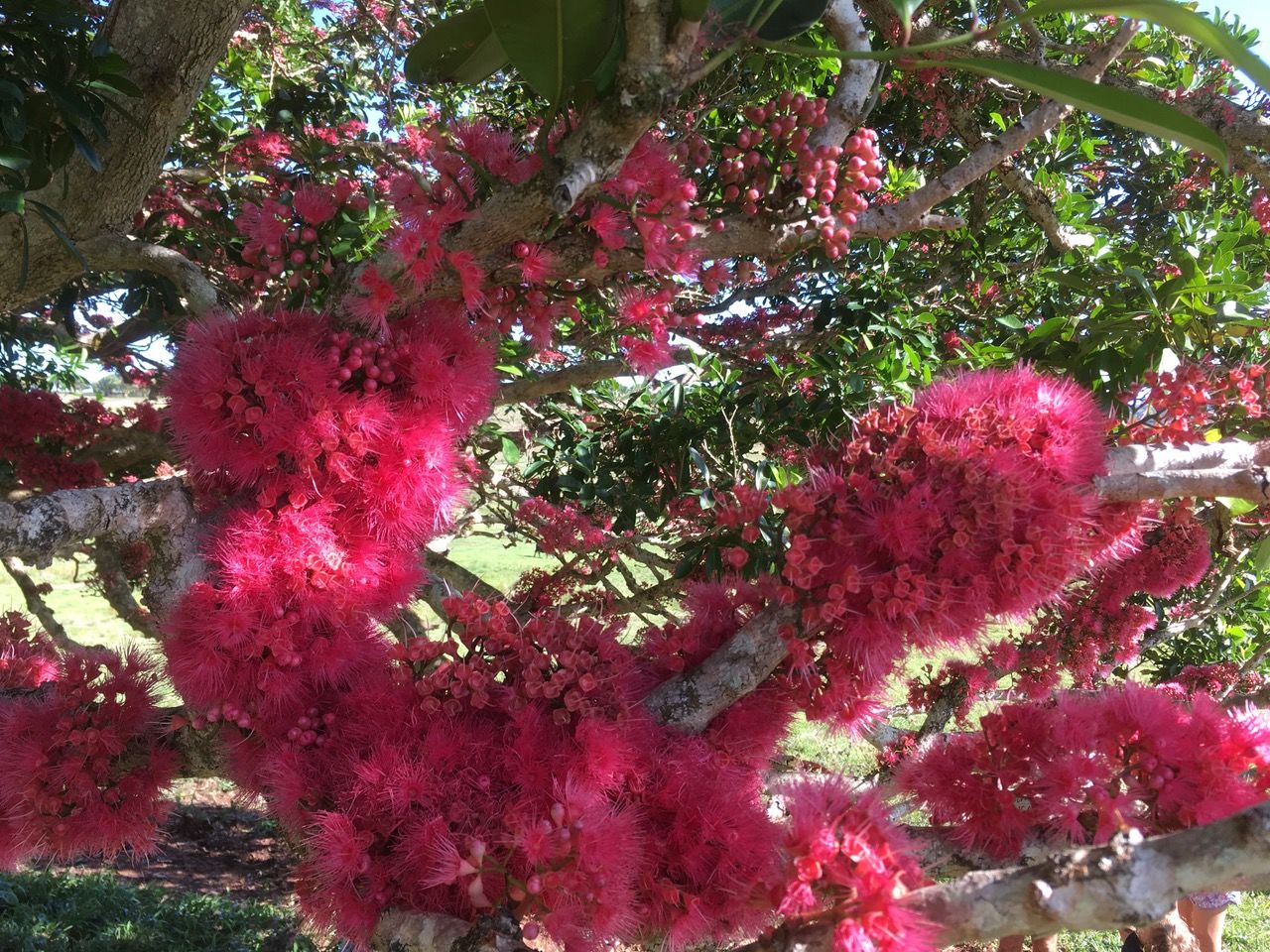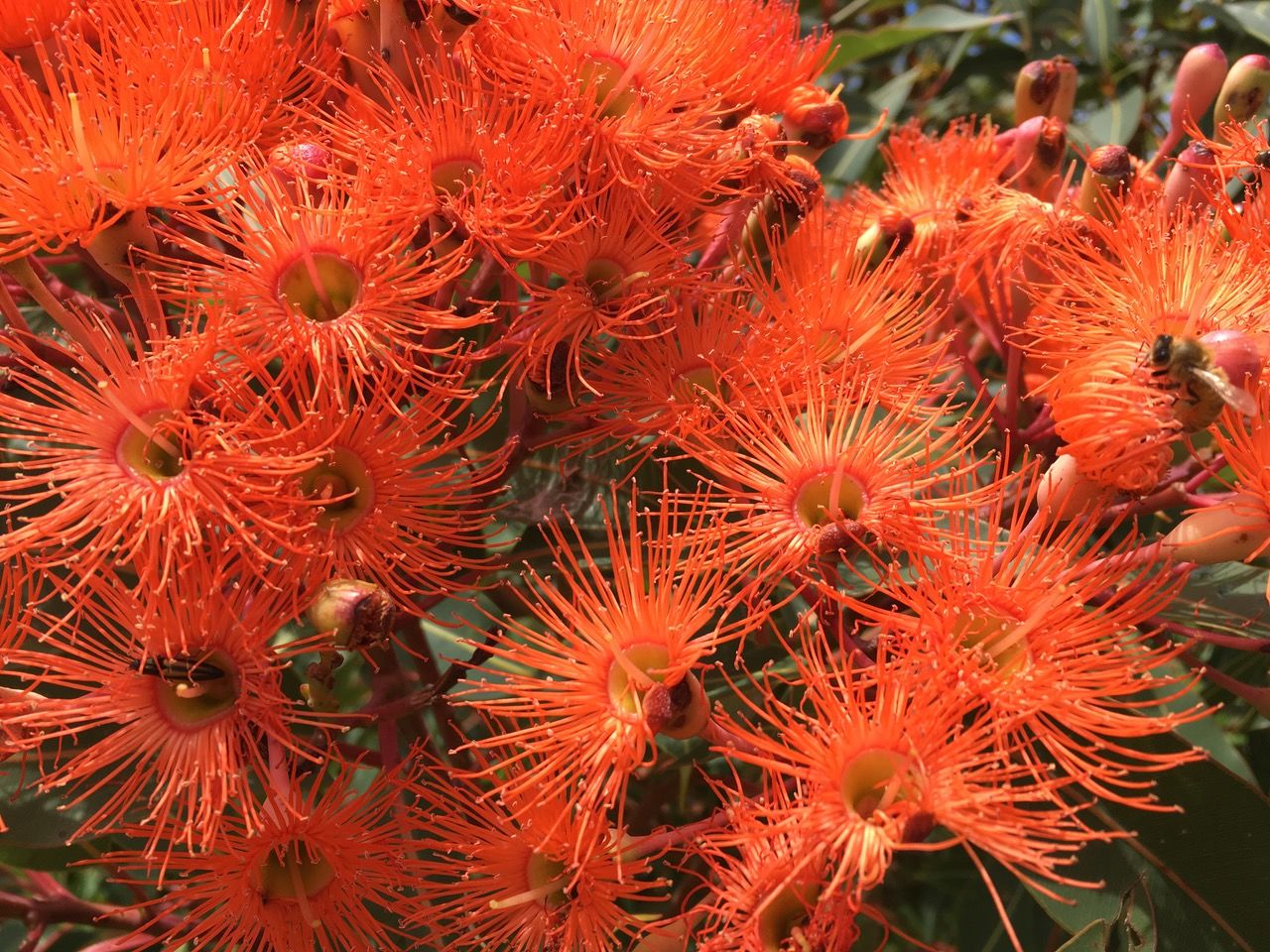It's early springtime in New South Wales, Australia, which is a busy time for Gabrielle Morley, beekeeper and farmer. She is tending to her bees and her medicinal herb garden making sure all are healthy. I last visited Gabrielle back in March so I thought I would check in and find out what’s happening now in August.
Gabrielle explains, “There are plants aplenty at this time of year. There is a white field of buckwheat growing that has been keeping the bees in top condition through the winter so the brood boxes are strong and healthy. Our herbs for our raw honey are flowering now. Unlike most beekeepers we don’t ever feed our bees sugar. The bees feed on our mustard crop and this helps them survive winter. The Australian Gum (Ficafolia) is in blossom and the Phoenix Palms are in flower, the male species providing plenty of pollen for the bees. The Australian Bush Pea (Pultinea Vilosa) is looking beautiful and is providing the bees with lots of lovely high-pollen fats, proteins and lipids also keeping them nice and healthy.”
Gabrielle began working with bees three years ago after realising how beneficial they were to her as a farmer. She grows Phoenix date palms on her land and bees do a lot of the work by pollinating her plants. She has taken her time researching, planning, planting, growing and creating one of the most amazing apiaries. Her care and attention to detail mean she has built up the bees' health and has created a colourful and diverse pollinator haven full of medicinal herbs and flowers. Gabrielle calls bees, ‘nature's little pharmacists’ as her healthy bees feed on the medicinal herbs and plants. The beneficial properties transfer to the raw honey and then the consumer.

Buckwheat Winter Crop

Pultinai Velosa
3 Medicinal Plants Bees Love to Forage On
Anise Hyssop “Lamiaceae” (Agastache foeniculum)
The Anise Hyssop is out at the moment, in full bloom. It is known to be beneficial for the heart and has been used as a healing herb by Native Americans for hundreds of years. It has tiny lavender-blue flowers and you could be mistaken for thinking they were part of the anise family as the plant smells and taste of anise, but it actually belongs to the mint family. Herb lovers claim it as a culinary herb, using the fresh or dried leaves in tea and crumbling the tangy flowers over fruit salad. Bees, butterflies and the occasional ruby-throated hummingbird love the flowers, and so do herb crafters, as blossoms retain their fragrance and colour when dried.
For the handy gardener, this plant is easy to care for and thrives in full sun and well-drained garden soil which is good news for the dry-land gardener. A mass planting can provide nectar and pollen for bees with a natural sugar content exceeding 40% in the raw honey.
Anise hyssop is a perennial herb that is well known for its many useful herbal benefits. It can be used as an infusion in tea to aid digestion and because of its antibacterial and anti-inflammatory properties is good for treating colds and can relieve congestion. It is said to strengthen a weak heart and is also useful in treating burns.
Coolamon (Syzgium moorei)
This rare, protected species provides the farm with amazing nectar at this time of the year. The Coolamon tree (or Rose Apple or Watermelon Tree) also known as a ‘durobby’ and ‘robby’ is a native sub-tropical lilly pilli rainforest tree found in New South Wales and up to the Queensland border. It is a beautiful canopy tree and can reach 40 metres in height. The leaves are unusual for a New South Wales myrtle, being large, thick and heavy, 8 - 20 cm long with a short blunt point at the tip and have the most amazing pinkisk-red colour which attracts the bees. The plant has antimicrobial properties, is high in essential oils and is good for treating skin complaints and sores. It is sometimes called a watermelon tree due to the colour of its flowers which are borne completely inside the crown on every available branch. In the autumn it bears large white fruit and throughout the seasons hosts an abundance of birds, nectar, bees and other fruit eaters.
Mexican Heather “Lythraceae” (Cuphea Hyssopifolia)
This small compact shrub with green, tiny foliage and a profusion of pretty, little mauve blooms is in flower most of the year. It is great for a low growing border or rockery as it grows approximately 45cm tall x 45cm wide and is ideal for Gabrielle’s herb garden and apiary.
The cuphea hyssopifolia, or Mexican heather, false heather, Hawaiian heather or elfin herb, is a small evergreen shrub native to Mexico, Guatemala and Honduras. The species is naturalised in Hawaii and regarded as a serious weed there. It has been cultivated and adapted well in the garden. The plant gained the UK’s Royal Horticultural Society's Award of Garden Merit in 2017.
Gabrielle explained how there is a lot of new research into this plant for its possible anti-tumour, anti-leukaemia, cancer fighting properties. It was cited in PubMed that the Graduate Institute of Pharmaceutical Sciences, Taipei Medical College, Taiwan; their research stated, "Where the use of properties found within the plant significantly inhibited the growth of the human carcinoma cell lines and the leukaemia cell line. The findings suggest that the anti-tumour effects of these compounds are not only related to their cytotoxicity on carcinoma cell lines but also depend on a host-mediated mechanism; they may, therefore, have the potential for anti-tumour applications".

Coolamon plant
Where to taste Gabrielle Morley's raw honey in the UAE
You can taste the amazing raw honey from Gabrielle’s medicinal herb garden soon. It's on its way from Australia to Balqees right now.
Connoisseur Blend - combining honey from the Anise Hyssop with the Australian Jelly Bush or Manuka which gives a powerhouse of healing benefits with the delicate anise flavour that impacts the taste beautifully.
Flavonoid Addiction – this brings together the Mexican Heather, Date Palm pollen and Anise Hyssop providing a trio of amazing curative and medicinal qualities rolled into one delicious raw honey.
Thanks to Gabrielle for sharing her insights, she is such an inspiration. You can grow your own medicinal herbs in your garden or balcony too. Speak to your local garden centre rep and find out what grows well in your environment. This way you get to see colour and greenery and you are rewarded with the health benefits the plants offer and they will attract pollinating bees, butterflies and certain birds which is a sign of a healthy garden. That’s got to be good for your well-being too.

Orange Ficafolia a plant that bees love
Other related articles you might find interesting









